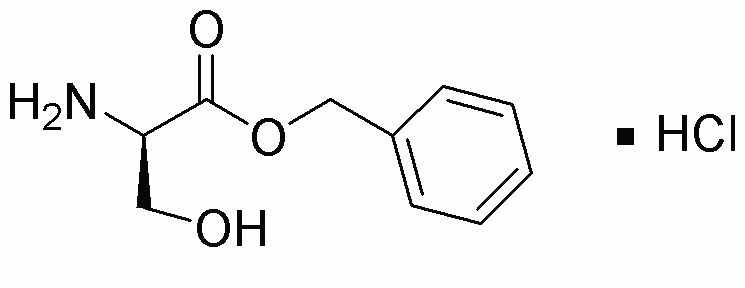D-Serine benzyl ester hydrochloride is widely utilized in research focused on:
- Neuroscience Research: It serves as a valuable tool in studying neurotransmitter systems, particularly in understanding the role of D-serine in synaptic transmission and neuroplasticity.
- Pharmaceutical Development: This compound is explored for its potential in developing treatments for neurological disorders, such as schizophrenia, by modulating NMDA receptor activity.
- Biochemical Assays: Researchers use it in various assays to measure enzyme activity and interactions, providing insights into metabolic pathways and cellular functions.
- Drug Formulation: Its properties allow for the formulation of more effective drug delivery systems, enhancing the bioavailability of therapeutic agents.
- Academic Research: It is frequently employed in academic settings for teaching and experimental purposes, helping students and researchers understand amino acid derivatives and their applications.
General Information
Properties
Safety and Regulations
Applications
D-Serine benzyl ester hydrochloride is widely utilized in research focused on:
- Neuroscience Research: It serves as a valuable tool in studying neurotransmitter systems, particularly in understanding the role of D-serine in synaptic transmission and neuroplasticity.
- Pharmaceutical Development: This compound is explored for its potential in developing treatments for neurological disorders, such as schizophrenia, by modulating NMDA receptor activity.
- Biochemical Assays: Researchers use it in various assays to measure enzyme activity and interactions, providing insights into metabolic pathways and cellular functions.
- Drug Formulation: Its properties allow for the formulation of more effective drug delivery systems, enhancing the bioavailability of therapeutic agents.
- Academic Research: It is frequently employed in academic settings for teaching and experimental purposes, helping students and researchers understand amino acid derivatives and their applications.
Documents
Safety Data Sheets (SDS)
The SDS provides comprehensive safety information on handling, storage, and disposal of the product.
Product Specification (PS)
The PS provides a comprehensive breakdown of the product’s properties, including chemical composition, physical state, purity, and storage requirements. It also details acceptable quality ranges and the product's intended applications.
Certificates of Analysis (COA)
Search for Certificates of Analysis (COA) by entering the products Lot Number. Lot and Batch Numbers can be found on a product’s label following the words ‘Lot’ or ‘Batch’.
Numéro de catalogue
Numéro de lot/série
Certificates Of Origin (COO)
This COO confirms the country where the product was manufactured, and also details the materials and components used in it and whether it is derived from natural, synthetic, or other specific sources. This certificate may be required for customs, trade, and regulatory compliance.
Numéro de catalogue
Numéro de lot/série
Safety Data Sheets (SDS)
The SDS provides comprehensive safety information on handling, storage, and disposal of the product.
DownloadProduct Specification (PS)
The PS provides a comprehensive breakdown of the product’s properties, including chemical composition, physical state, purity, and storage requirements. It also details acceptable quality ranges and the product's intended applications.
DownloadCertificates of Analysis (COA)
Search for Certificates of Analysis (COA) by entering the products Lot Number. Lot and Batch Numbers can be found on a product’s label following the words ‘Lot’ or ‘Batch’.
Numéro de catalogue
Numéro de lot/série
Certificates Of Origin (COO)
This COO confirms the country where the product was manufactured, and also details the materials and components used in it and whether it is derived from natural, synthetic, or other specific sources. This certificate may be required for customs, trade, and regulatory compliance.

